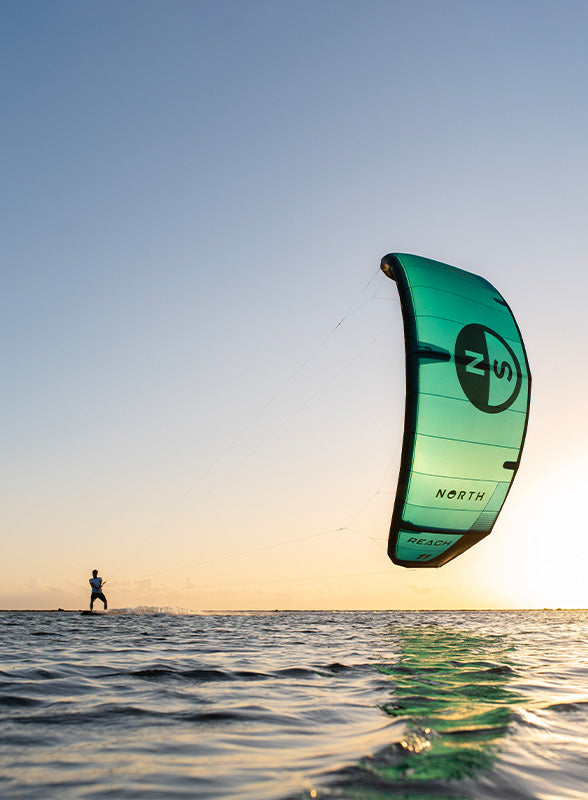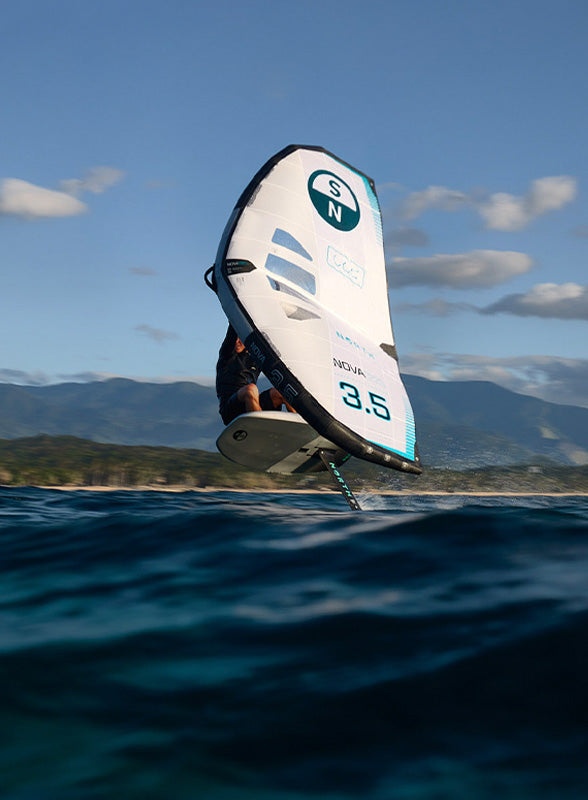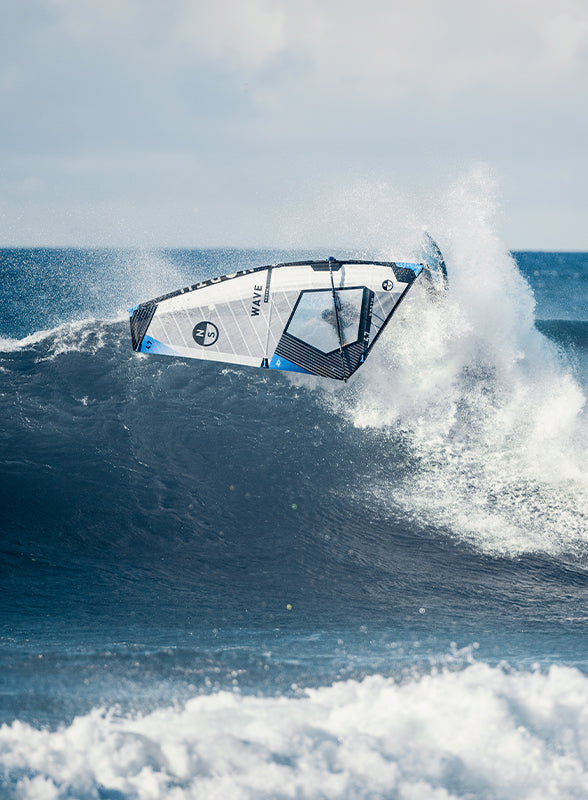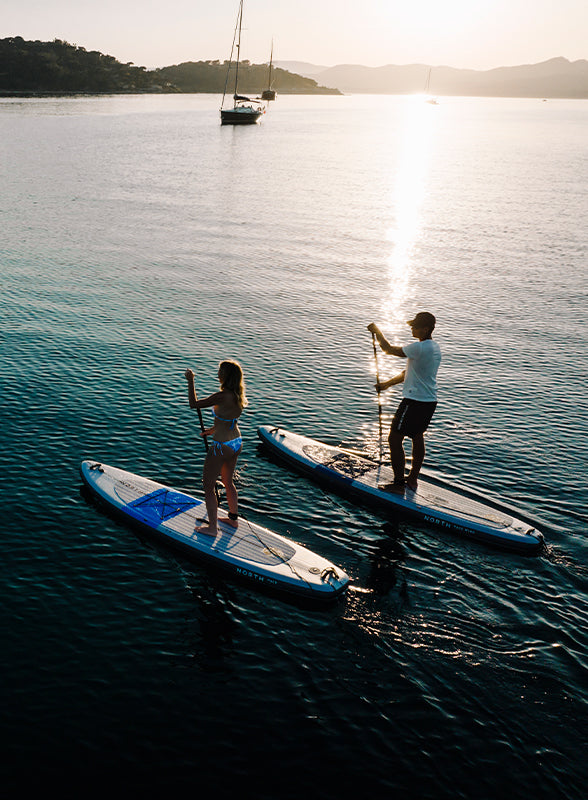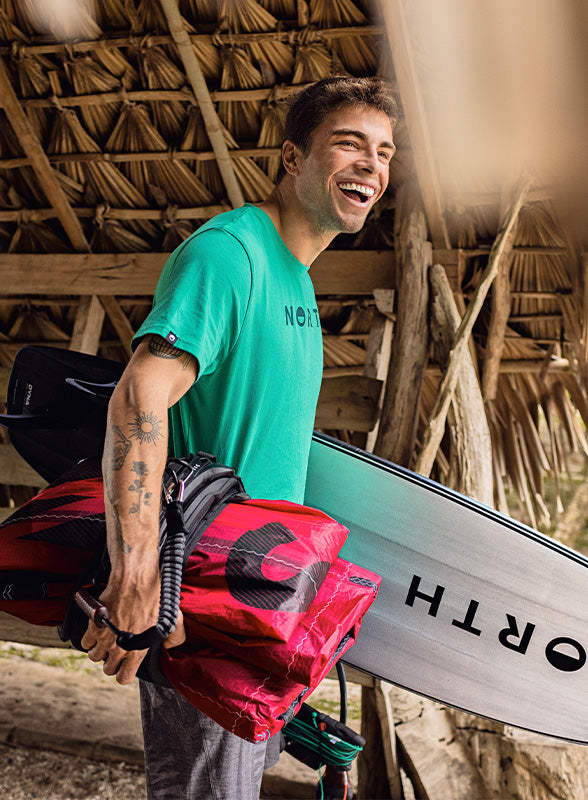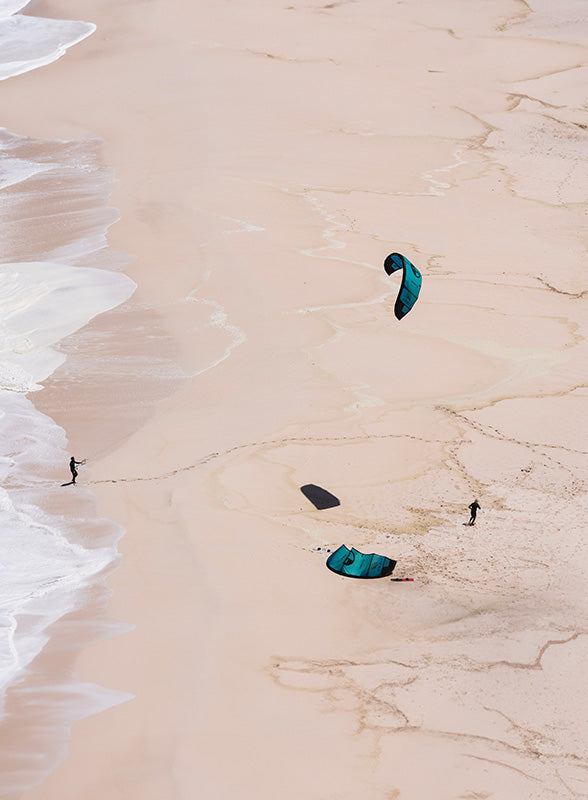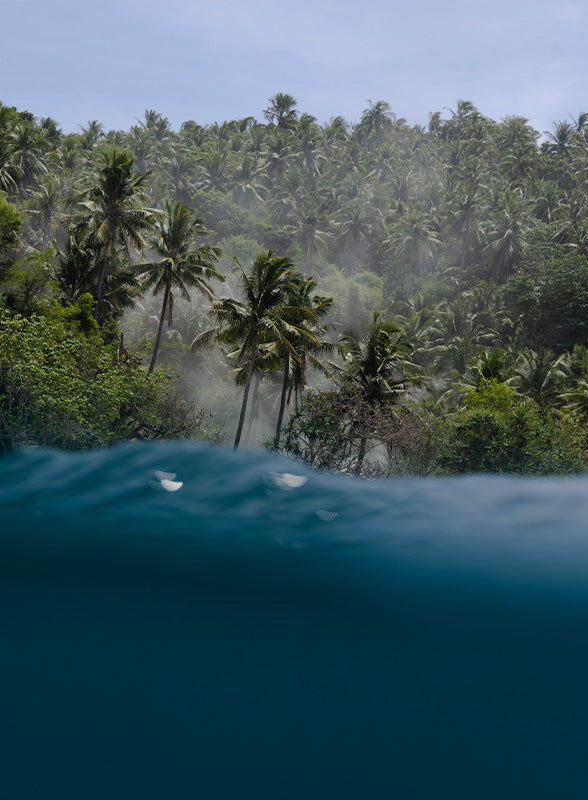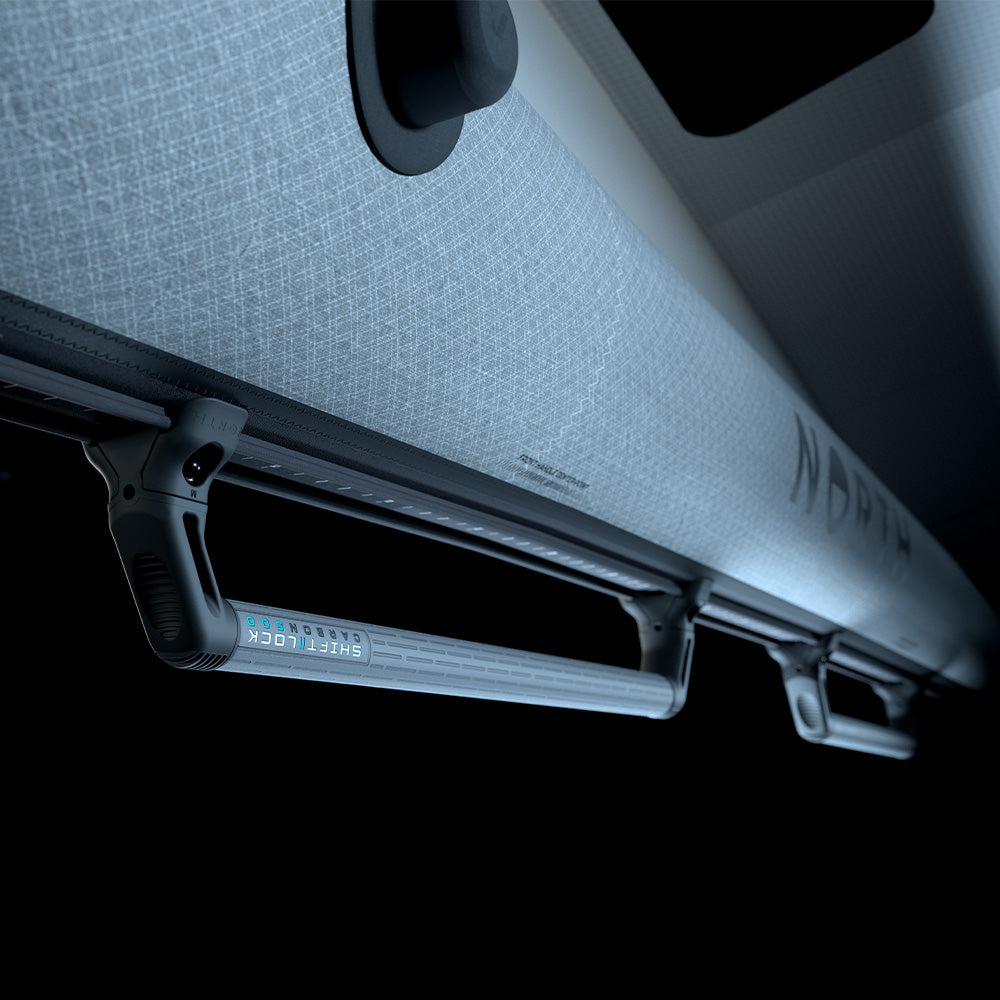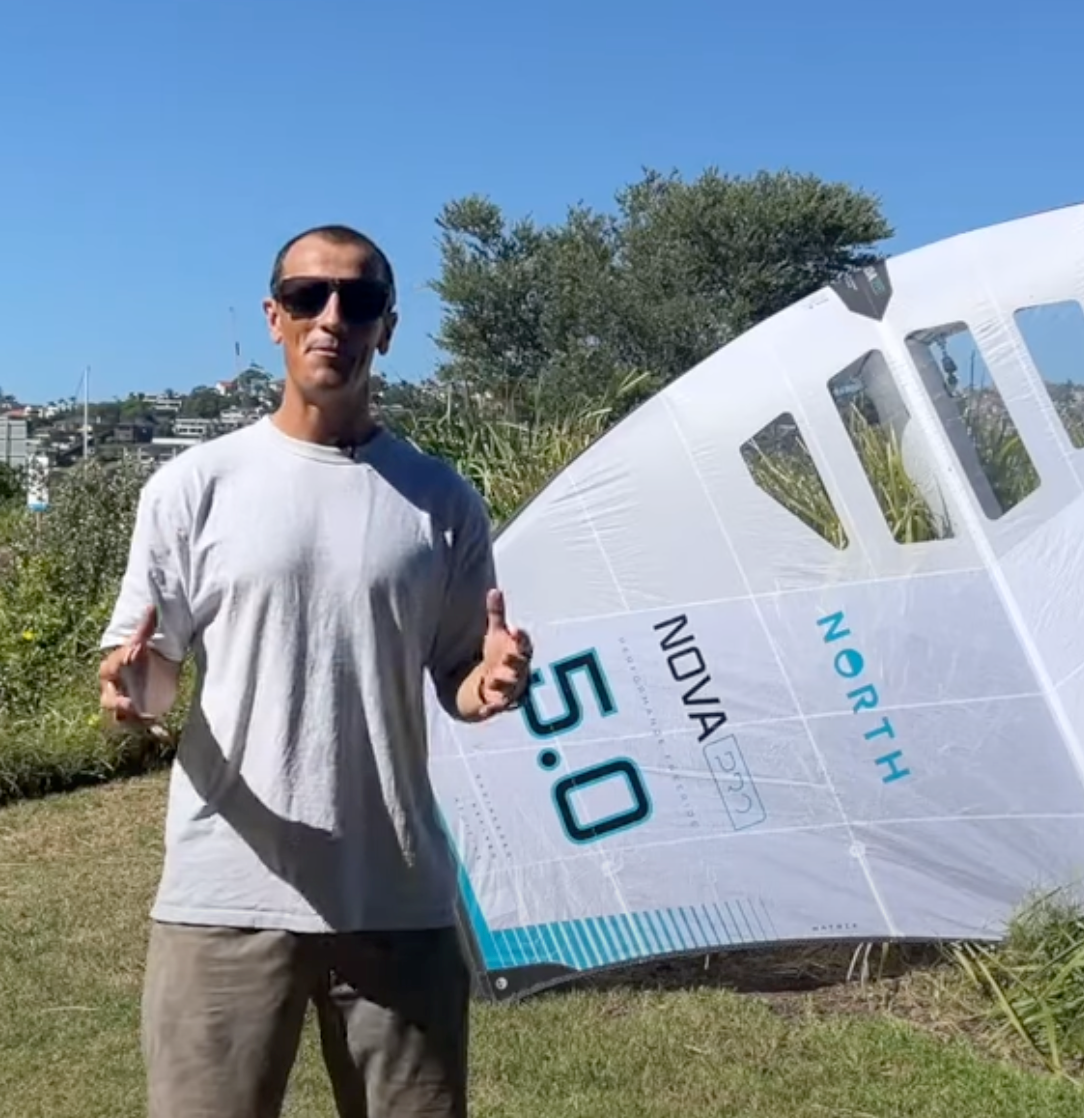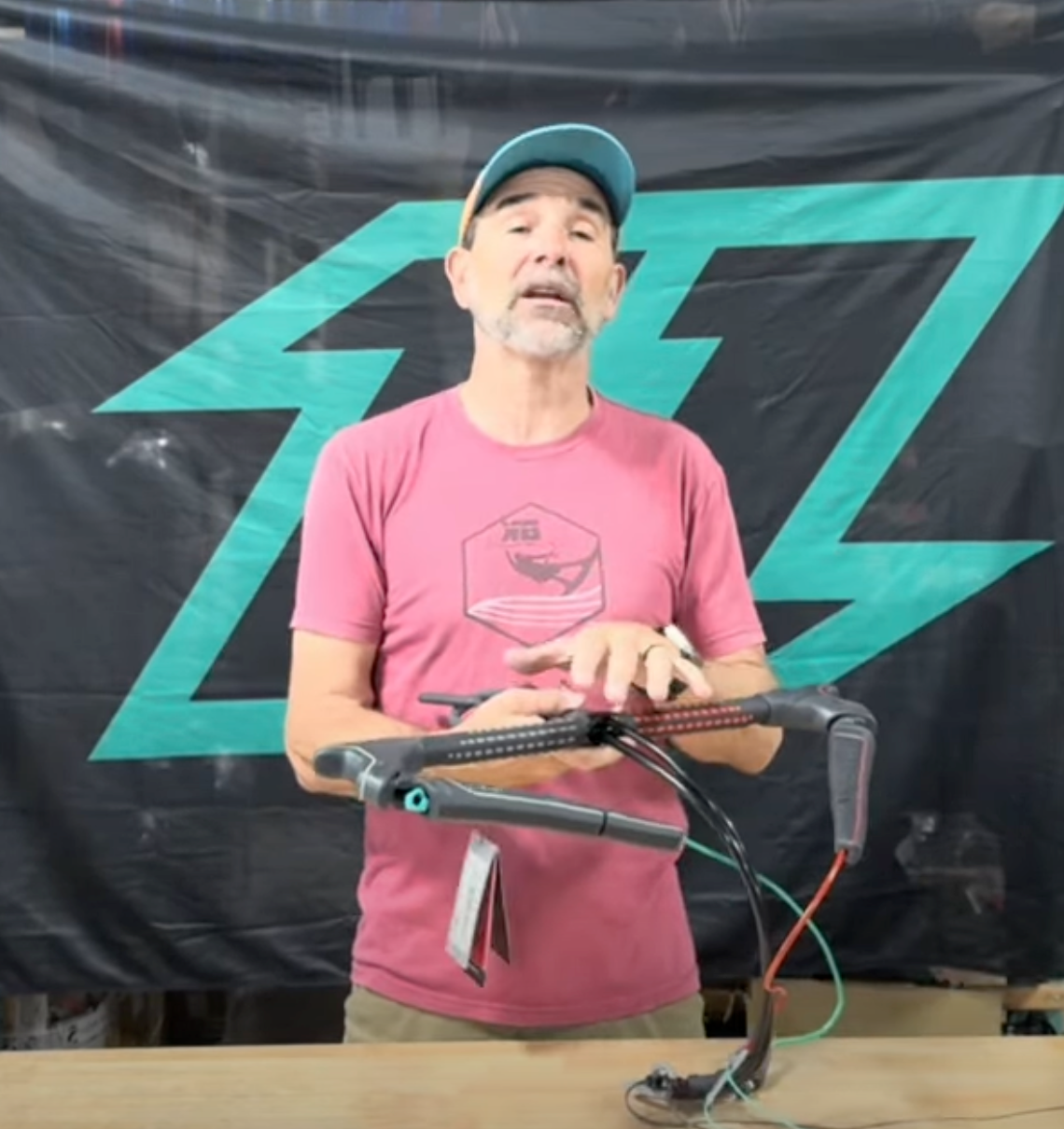IKSurf Mag talks to George Hradil
Drawing on his wealth of race foil engineering knowledge, Sonar Hydrofoil Engineer George Hradil set out to create front wing designs for North with a greater speed range and easier handling than in the past: "I’ll give you a big wing. But that big wing is going to be fast, it’s going to have low-drag, you’re still going to be able to go 25mph on it and at low speed it’s going to be all you want." Feature: IKSurf Mag, Photos: Frankie Berthuot and Georgia Schofield.
Tech Focus – North Sonar Foils Issue 86
Tell us about reflexed hydrofoils and reflexed camber. What does this mean? How does it affect performance?
A normal hydrofoil wing is what’s called under cambered – it’s more curved on top and flatter on the bottom, sometimes concaved on the bottom.
If you measured halfway between the top surface and the bottom surface, you’d get what’s called the camber line. It dictates how the foil is going to behave. If I drew that line just by itself, it would be concaved downward.
A reflexed foil has a different shape. Instead of the trailing edge being orientated downward, it is orientated slightly upward. What that means is that the trailing edge doesn’t create any lift at the back of the foil. In fact, there’s a localised downforce on the trailing edge of the wing, which acts like a stabilizer would.
So, in essence, when you use a reflexed foil, it’s like you’ve built a mini stabilizer into the back edge of the wing.
This does a couple of things:
Firstly, it makes the wing itself a lot less pitch sensitive – it needs less stabilizer angle in order to be stable in pitch. And secondly, it gives the foil an incredible speed range. It can get going in very low speeds but at really high speeds it is very controllable.
Most wings start to foil around 10mph (maybe 8mph) but by the time you get to 20mph big wings are pushing hard and it really limits the amount of top end speed. Our goal was to keep the wing level, and not have it become unstable at high speeds. With a lot of wings, particularly big wings, as you go faster and faster, the nose of the board starts going down and the foil starts riding at a negative angle of attack (the angle the wing flies through the water on). In that negative angle state, the wing becomes very pitch unstable. But a reflexed foil just doesn’t behave like that. It’s extremely stable at high speed because the trailing edge has that stabilizer built into it.
Read the full article here
